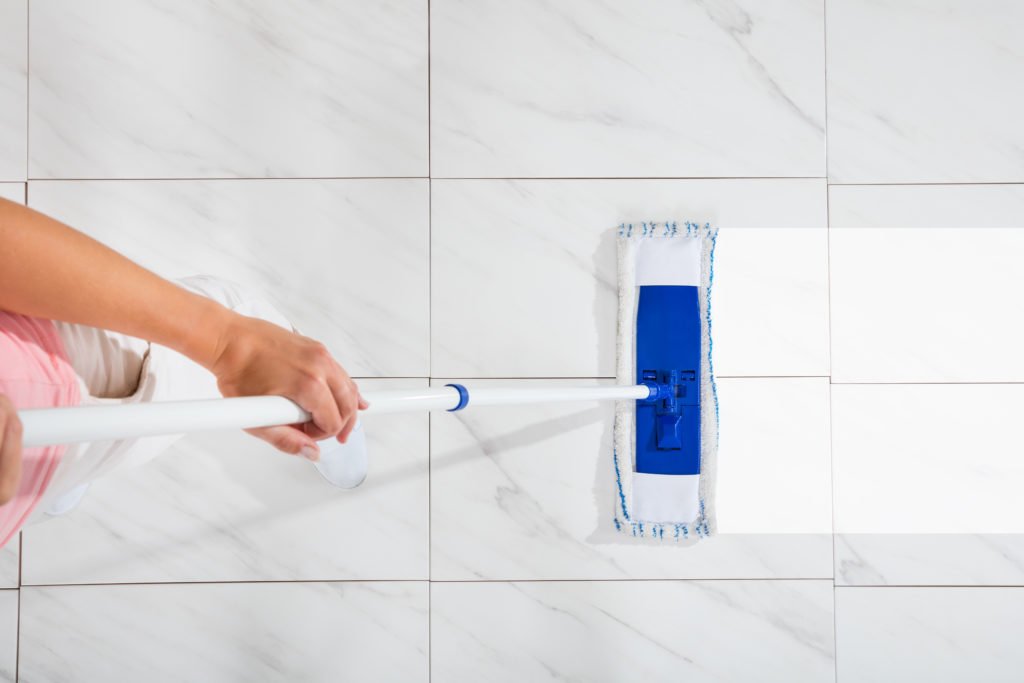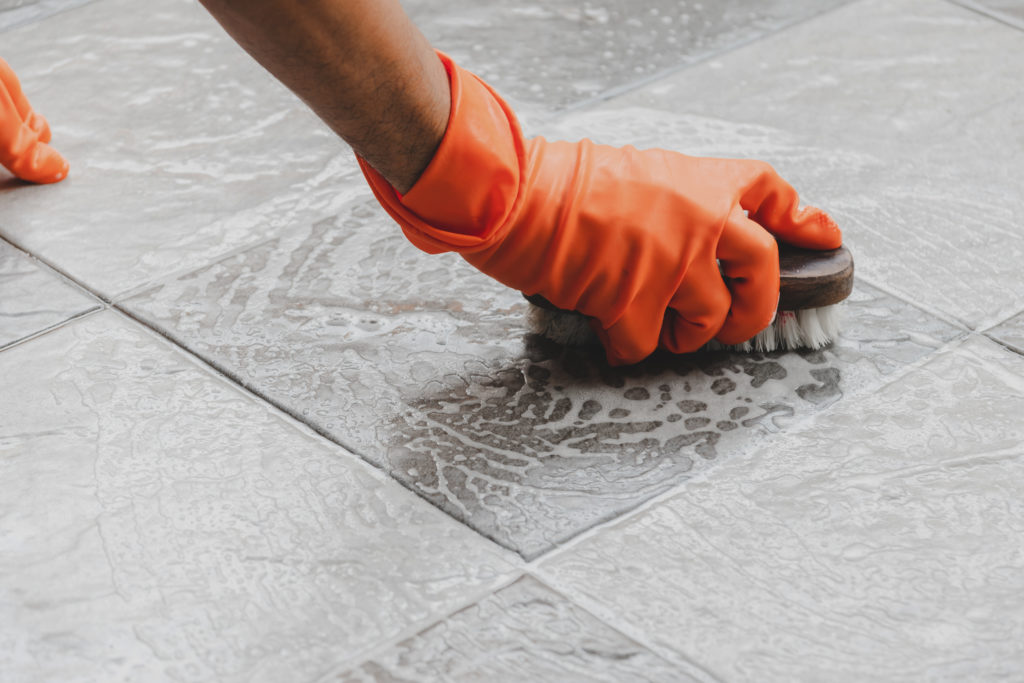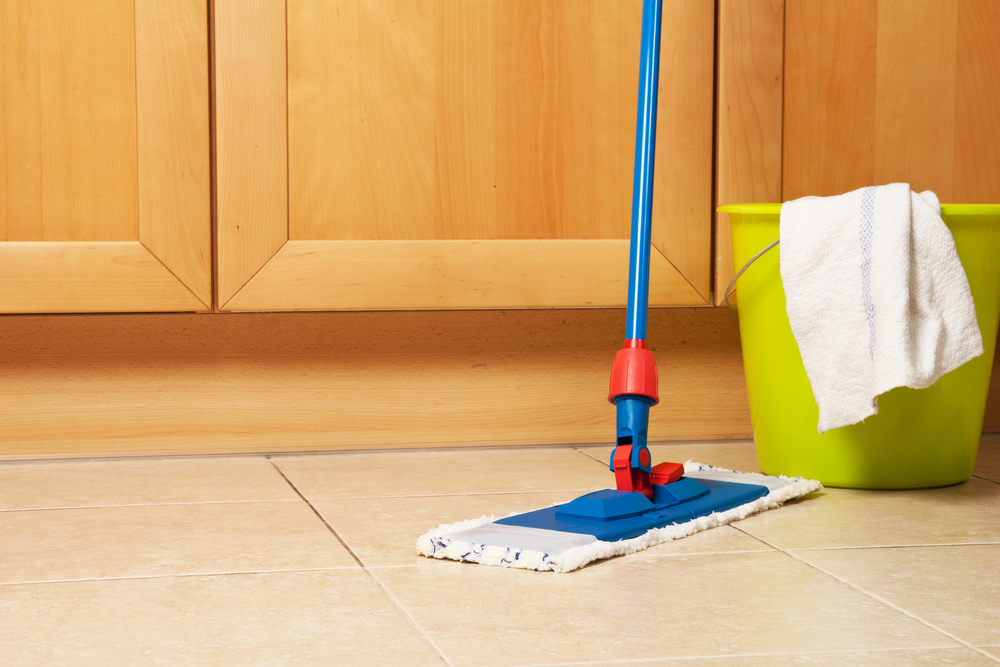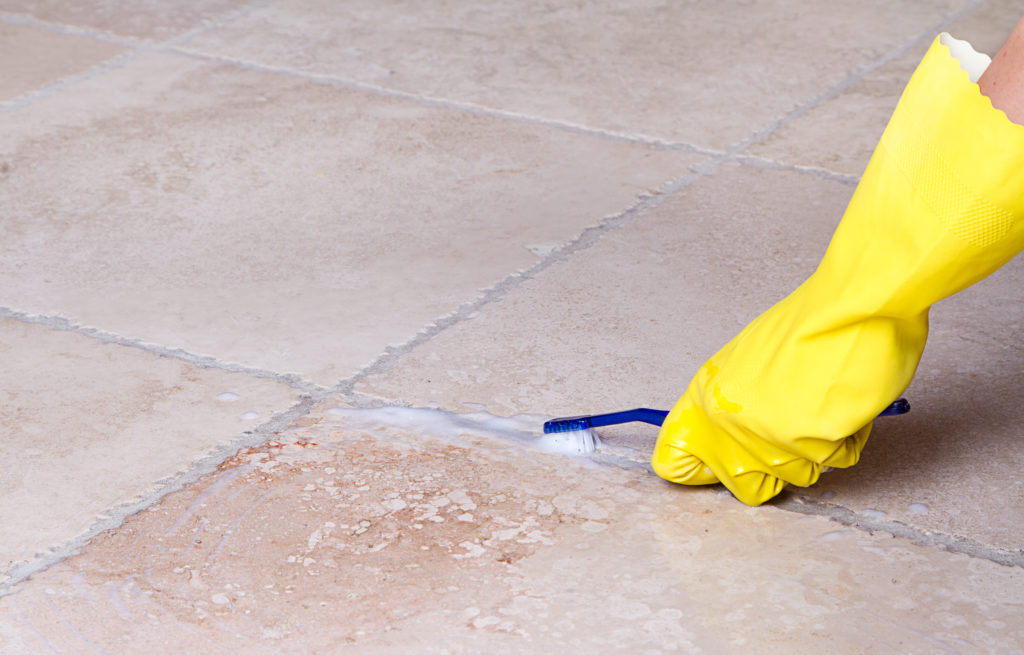How to Clean and Maintain Natural Tile Flooring

One of the benefits of natural tile flooring is that it is incredibly durable, enabling it to hold up well over time. When it comes to caring for stone tile, however, it’s important to make sure you clean it properly. Using the right methods to clean your natural tiles is essential to maintain its gorgeous appearance over the years to come. The following methods are recommended for proper cleaning and maintenance of the natural tile flooring in your home.
How to Clean Natural Stone Tile Without Damaging It
Sweep and Vacuum
The easiest methods for everyday, basic cleaning on natural stone tiles are sweeping and vacuuming. Always use a soft-bristled broom when sweeping to avoid scratching the stone surface as you brush away dust, dirt, sand, and crumbs. Try to sweep at least once a day if possible to keep debris from being ground into the stone surface as you walk over it.
Vacuuming is another easy way to keep your natural stone floors free of dirt, dust, and other debris. To vacuum, choose the bare floor setting, so the stiff bristles on the beater bar won’t damage the natural stone. You can go over the stone with a damp mop about once a week to keep the floors looking their best.
Use Natural Cleaners
When you need to clean your floors more thoroughly, use mild and natural ingredients to prevent any staining or damage to the natural stone. Here are a few potential recipes you can use to create a gentle stone floor cleaning solution:
- One-quarter cup natural vegetable-based soap mixed with 1 gallon of warm water.
- One-quarter cup alkaline dishwashing soap mixed with 1 gallon of warm water.
- One-quarter cup soap flakes made from coconut and vegetable oils mixed with 1 gallon of warm water.
- One-quarter cup shavings from an olive oil-based Castile soap mixed with 1 gallon of warm water.
Use a string mop to apply the solution to the natural stone tiles. Dry with a soft cloth.
Many types of natural stone can undergo damage by harsh cleansers. You should never use vinegar, bleach, or ammonia on your floors.
Clean Grease
If you have natural stone flooring in your kitchen, your dining room, or in an outdoor cooking or barbecue area, you may occasionally have grease or other fats get onto your floors. This problem can also occur in bathrooms where cosmetics are applied. These types of stains and spills must be treated with care to protect the stone.
To remove fats or any other greasy stains, first pat away any excess from the surface using a dry paper towel or rag. Then, apply a thick layer of talcum powder or baking soda over the affected area. Let it sit for several hours before sweeping it away or vacuuming it up. If the stain persists, you can try leaving the powder on the area for several days.
Clean Rust
Rust rarely occurs on natural stone tiles, but if it does, you’ll need to apply a harsher cleanser than usual to get it out. Mix lemon juice and salt together; then apply it very carefully only to the affected area. Leave it on the stone for a very short period before cleaning it with plenty of warm water. Allow the stone to dry naturally.
Keep in mind that it may be difficult to remove rust stains completely from natural stone. In addition, the stone may lose some of its shine in the areas where you apply this treatment.
Clean Organics
If organic materials such as sauces, coffee, wine, or other foods leave a mark on your natural tile floors, you’ll want to clean it carefully. Try gentle cleansers first to see if the stains are removed. If not, you can try dabbing hydrogen peroxide on the area. As the solution may leave a stain, test it in a less obvious area of the floor before proceeding. This method can also be applied to areas where leaves or other plant materials have left stains on your floors.
Clean Paint and Inks
Paint and ink stains can be particularly challenging when they appear on your natural stone flooring. Apply a small amount of acetone or mineral alcohol to get these stains out. As with the method for cleaning organics, you’ll want to test this method in a hidden area to see how the stone will be affected before using it in a more noticeable location on your floors.
Bring Out the Shine
Certain types of wax can be applied to natural stone tile in order to bring out its shine. A high-quality wax can also make your floors more resilient and easier to clean, since they seal the pores a bit for better stain-resistance. Keep in mind that before each waxing, you need to use a special product to remove any previous layers of wax remaining on the floor.
Clean the Grout
The grout between your natural stone tiles may get a bit dingy or stained from time to time. Fortunately, there’s a relatively easy and inexpensive fix for this common household cleaning challenge.
To create a gentle yet effective solution for cleaning your grout, mix 3-parts baking soda with 1-part water. For spot cleaning, mix 3 tablespoons of baking soda to 1 tablespoon of water. To clean a larger area, you could start with 3 cups of baking soda to 1 cup of water.
Apply the mixture to the grout lines only and allow it to sit for at least 10 minutes. Use clean, warm water to rinse it away. If your grout lines still look dirty, apply more of the mixture and use a small brush to scrub the grout gently and lift out any remaining stains. Be careful not to scratch the surface of your stone tiles while performing this task.
Cleaning your natural stone tiles may require a bit of effort, but it’s well worth it to enjoy the beautiful appearance, eco-friendly style, and exceptional durability this type of flooring offers. Be sure to use these tips to keep your natural tile flooring in excellent shape.



